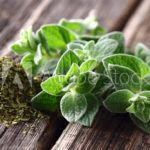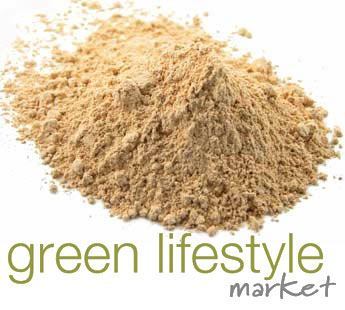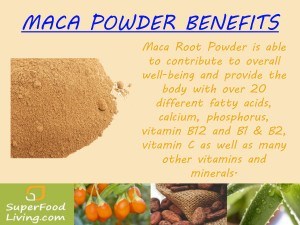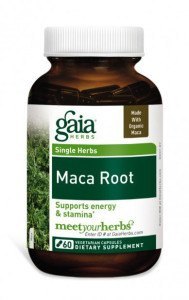How to Regrow Your Favorite Herbs and Save Lots of Money
It’s so easy to get food – just go to the store, find what you want, come back home, prepare it, eat it, and repeat. But what if you just had to go to your windowsill?
Although many fruits and vegetables won’t fully grow on your windowsill, many of your favorite herbs can easily be grown in your house and your garden, so you will always have an abundance of herbs available.
Herbs will not provide you with all the calories that you need to survive, but they are packed with what you need to thrive. They have more vitamins, minerals, phytonutrients, flavonoids, and phenolic compounds than almost any other fruit or vegetable, which make them flavorful and medicinal at the same time.
Featured image credit and cool DIY project: Window-Mounted Hanging Herb Garden
How to Grow an Abundance of Herbs
In this article, we will focus on how to regrow herbs from kitchen scraps with as little effort as possible. It all starts with buying the herbs that you want to grow from your local organic grocery store, and if you are successful at growing them you will never have to buy your favorite herbs again.
Reocmmended: How to Eliminate IBS, IBD, Leaky Gut
Mint
This herb is most commonly consumed as herbal tea, but it also can be added to dishes like raw carrot salad or cacao-based deserts to make it more flavorful. Mint may help relax your gastrointestinal tract, improve the health of your nervous system and immune system, and prevent cancer. To grow it yourself and get all of these benefits, all you need is a healthy mint stem with leaves.
Here’s how you grow it:
- Pick a healthy 3-inch stem with leaves from your bundle of mint. Remove the lower leaves for use in your recipe, but leave a couple healthy leaves on top.
- Put the stem in a glass of water on a windowsill that receives plenty of light. When the water starts to look murky, dump it out, and replace it with fresh water to keep your plant healthy. Your mint will develop roots within a couple of weeks.
- Once your mint’s roots have grown in, plant it in a pot with soil and water it enough to keep the soil moist.
Tips:
- Choose an indoor or outdoor location where it receives morning sun and afternoon shade.
- Mint spreads easily and can take over your garden, so it’s best to grow it in its own pot.
- Harvest the mint leaves before it flowers.
- Extend your harvesting season by pinching off the flowering buds as they appear.
Lemon Balm
Lemon balm is a member of the mint family and comes with many of the same health benefits as mint. It was used as far back as the Middle Ages to reduce stress and anxiety, promote sleep, improve appetite, and ease pain and discomfort from indigestion.
Follow the same steps as you do to grow mint.
Tips:
- It grows best in full sun and will tolerate shade.
- It prefers slightly moist soil.
- It will die back to the ground in freezing weather, but regrow from the roots in spring.
Basil
Another member of the mint family, basil is one of the most popular herbs used in cooking across cultures. Not only does it make sauces, curries, and even watermelon taste better, it also fights bacteria, viruses, and chronic diseases.
Here’s how you can grow it:
- Take a 4-inch basil cutting right below a leaf node, and remove the leaves off of the basil cutting about 2 inches from the end.
- Put it in a glass of water and keep it in your house where it can get sunlight throughout the day.
- Change the water every few days.
- When the roots grow 2 inches or longer in about two to four weeks, put it in a planter where it can get direct sunlight.
Tips:
- Grows very fast in 80 to 90 degree Fahrenheit weather.
- Harvest leaves by pinching them from the stems after the plant has reached 6 to 8 inches.
- Harvest all the basil before the first frost.
- Freezing basil best preserves its flavor.
- Always cut leaves from the top of the plant to encourage more leaf growth and to discourage the plant from seeding.
Rosemary
Most of us can tell when rosemary is around because of its potent fragrance, but do you notice the cognitive boost the smell can give you? Studies show that the smell of rosemary can improve our quality of memory and increase our alertness. The positive effects only increase when we consume rosemary because of its potent antioxidant activity. Add about a 1/2 teaspoon of rosemary to your roasted vegetables and you can increase their flavor while you boost your cognitive function.
To regrow your rosemary:
- Snip a sprig of rosemary from 2-3 inches off the top of a healthy rosemary sprig.
- Use the lowest leaves for cooking and keep the others that are further up on the sprig.
- Place the sprigs in a small glass with the stem fully immersed in water on a windowsill. Change the water every few days and rinse the stems at the same time.
- After about 2 months you will begin to notice roots coming from your rosemary sprig. Give the roots about 1 to 2 weeks to sturdy up before you plant them in soil.
Tips:
- Rosemary takes time to grow. It should pick up speed in its second year.
- Make sure it gets full sun and light, although partial shade is fine.
- Let the soil dry out between watering.
- Use mulch to keep roots moist in summer and insulated in winter.
- Prune dead wood from the plant in the spring.
Thyme
Thyme has anti-inflammatory properties, making it the perfect herb to fight off diseases that are linked to inflammation like heart disease, asthma, arthritis, Crohn’s disease, Alzheimer’s disease, cancer, diabetes, and Parkinson’s disease. Simply put it in your soup, stew, or roasted vegetables to infuse your food with delicious flavor.
Rosemary and thyme grow similarly at first. You can start growing your thyme and rosemary in the same cup. However, once you are ready to plant them, put them in separate pots or areas of the garden. Thyme will grow faster then rosemary, and will need to be pruned by one third in the spring. It requires full sunlight just like rosemary.
Parsley
Parsley is packed with Vitamins C, A, and K. It also contains a flavone called apigenin, which can destroy cancer cells. To make the most of this herb you can add parsley to your vegetable juices or smoothies, or have it in salads, dressings, sauces, or soups.
Here’s how you can grow it at home:
- Cut a stem of parsley to around 3-4 inches long and leave a few leaves on the top for regrowth.
- Place it in a glass of water in a sunny spot on your windowsill.
- Transfer it into a pot with soil when roots appear.
Tips:
- Parsley is a biennial, which means it grows for two gardening seasons then dies. The first year is when it produces the leaves that we commonly eat, and in its second year it goes to seed.
- It grows well with annuals, perennials, and herbs in full sun or partial shade.
- Don’t eat the leaves when the plant begins to flower, they will be bitter.
- You can eat the parsley root as well. Cook it after its sliced or cubed like you would prepare turnips or parsnips.
Cilantro
 One of the most pungent smelling and tasting herbs, cilantro is filled with phytonutrients, flavonoids, and phenolic compounds that may help rid the body of toxic heavy metals like lead and mercury. It is also a good source of vitamins A & K, calcium, magnesium, and potassium. Add it to guacamole, salsa, or sauces to give them more flavor, or juice it and add it to your favorite vegetable juice.
One of the most pungent smelling and tasting herbs, cilantro is filled with phytonutrients, flavonoids, and phenolic compounds that may help rid the body of toxic heavy metals like lead and mercury. It is also a good source of vitamins A & K, calcium, magnesium, and potassium. Add it to guacamole, salsa, or sauces to give them more flavor, or juice it and add it to your favorite vegetable juice.
Although cilantro grows better from seed, you can still grow a full plant in a few months from a cilantro stem cutting. Simply follow the same steps as you do to regrow parsley.
Tips:
- Cilantro thrives in full sun and grows faster than most other herbs.
- Harvest by cutting the leafy stems near ground level
- Avoid cutting more than one-third of the leaves at one time.
- For maximum flavor, chop the leaves and add them to your meal at the last minute.
- To preserve flavor, store cilantro by freezing it in cubes of water or oil.
- Let the plant self sow its own seeds and regrow itself or dry the coriander seeds and use them in curry, poultry, relishes, and pickles.
Sage

Sage is a natural antiseptic with preservative and bacteria-killing abilities. It adds a delicious flavor to almost any meat dish, and it can also be brewed as a relaxing tea.
Here’s how to grow it yourself:
- Cut a 1-2 inch long stem. Remove all leaves except the top ones.
- Place in a glass with the stem fully emerged in water. Place on a sunny windowsill and after two weeks roots should appear.
- Plant in soil.
Tips:
- It grows well in medium to full sun indoors or outdoors.
- Let the soil dry between watering.
- For the richest concentration of their aromatic oils, harvest sage leaves in the morning, after the dew has dried.
Oregano
 Oregano was revered as a symbol of happiness by the ancient Greeks and Romans, and for good reason. It contains antioxidants and phytochemicals that fight off common happiness destroyers like infections, inflammation, and cancer. Add to your favorite sauce or salsa, or you can use it as a medicine to kill off infections by drinking it as tea or making your own oregano oil.
Oregano was revered as a symbol of happiness by the ancient Greeks and Romans, and for good reason. It contains antioxidants and phytochemicals that fight off common happiness destroyers like infections, inflammation, and cancer. Add to your favorite sauce or salsa, or you can use it as a medicine to kill off infections by drinking it as tea or making your own oregano oil.
Oregano is also one of the easiest herbs to grow at home:
- Cut a stem measuring 2-3 inches long; just below a leaf node. Remove all leaves except for the ones on the top, and cut off all flowers.
- Place the cutting in a glass with water covering at least one of the leaf nodes.
- When roots appear within a week, transfer the plant to a pot with soil.
Tips:
- Only water the oregano when the soil is dry to the touch.
- It prefers sun with a bit of afternoon shade.
- Cut out dead stems in the spring before the plants begin new growth.
- Begin harvesting as soon as the plant is several inches tall.
- The herb has a stronger taste when it is dried than when it is fresh.
- For a big harvest, cut the stems just above the plant’s lowest set of leaves. This stimulates new growth for another harvest in late summer.
Marjoram
Marjoram has one of the most subtle flavors of all the herbs we covered in this article. It is a member of the mint family, and a subspecies of oregano, so it comes with the digestive benefits of mint and the anti-bacterial, anti-fugal, and anti-viral benefits of oregano. This makes it a perfect addition to soups, sauces, and salads, as well as home-made skin care products.
Here’s how you can grow marjoram:
- Cut a stem a few inches long and remove all the leaves except a few from the top.
- Place in a glass of water with the waterline fully covering the stem.
- Transfer to soil when roots appear.
Tips:
- Prefers full sun
- Trim the plants when buds appear to ensure continued growth
- Begin picking fresh leaves as needed 4 to 6 weeks after planting
- Keeps its full flavor fresh or dry.
Lavender
If you want to calm your anxiety, just break off some lavender flowers, grind them between your fingers, and take in its aroma. Lavender is similar to rosemary because one sniff can change your state of being. However, lavender will sedate you and relax you rather then increase your alertness like rosemary.
Lavender also can help calm skin inflammation, so it will be a perfect herb to add to your homemade soaps and lotions. If you think you’ll like the taste of lavender then you can add it to roasted rooted vegetables and your favorite sweets like cookies, chocolates, and frozen deserts. Lavender goes especially well with honey.
Here’s how you can regrow lavender at home:
- In the spring, Cut 3-4 inches from the soft, pliable tips of new growth on a lavender plant.
- Remove all of the leaves from the lower 2 inches of the stem and then gently scrape the skin off the bottom portion of the stem on one side with a knife.
- Fill a small pot with a homemade mix of half vermiculite or perlite and half peat moss
- Stick the lower end of the cutting about 2 inches into the soil and firm the soil so that the cutting stands up straight. Cover with plastic to form a greenhouse-like environment for the cuttings.
- Remove the plastic when the cutting has roots. This will take two to four weeks.
- Set the plant in a sunny location and water it when the soil is dry an inch or so below the surface.
Tips:
- Gently tug your lavender cutting to see if it has roots. If it resists the tug then it has roots. (Only tug the cutting once every 3 to 4 days.)
- Put the lavender in a container with adequate drainage. Lavender doesn’t like to be damp.
- It will grow best when it receives 8 hours of sun a day.
- Lavender thrives in warm temperatures.
Garlic
Garlic is delicious to our taste buds and spectacular for our health. It contains a miraculous compound called allicin, which prevents cancer, boosts our immune system, reduces blood pressure, and improves cholesterol levels. Garlic also helps reduce oxidative stress, heal inflammation, and detoxify heavy metals.
And it’s easy to grow:
- Separate the cloves from your organic garlic bulb.
- Plant them pointy sides facing up two inches deep in the soil (pot or garden.)
- Harvest when the green tops begin to yellow and fall over. This will be in July or August in northern climates.
Related: Garlic – The Most Amazing Herb On The Planet
Tips:
- Plant it a month before the ground freezes.
- Fertilize it with nitrogen from things like crushed egg shells.
- Cut off any flower shoots to encourage bulb growth.
- After harvest, let the bulbs cure in an airy, shady spot for two weeks.
- Save your largest, best-formed bulbs to regrow in the fall.
- Northern gardeners should mulch heavily with straw for over-the- winter outdoor gardening. Remove mulch after the threat of frost has passed.
- Water every 3 to 5 days from May through June.
- Ensure they get full sun.
Ginger
 Ginger is commonly known for its ability to treat indigestion and nausea, but it also contains potent anti-inflammatory compounds that can prevent heart disease and reduce the symptoms of osteoarthritis. You can easily make it into a delicious tea or supplement with a slice of ginger with every meal to promote digestion and gain its other healing effects.
Ginger is commonly known for its ability to treat indigestion and nausea, but it also contains potent anti-inflammatory compounds that can prevent heart disease and reduce the symptoms of osteoarthritis. You can easily make it into a delicious tea or supplement with a slice of ginger with every meal to promote digestion and gain its other healing effects.
Ginger can easily be grown in its own pot indoors. Here’s how:
- Find an organic ginger root that is plump with tight skin, not shriveled and old. Soak it overnight in warm water to get it ready for planting.
- Stick the ginger root with the eye bud pointing up and cover it with 1-2 inches of soil, and water it well.
- Keep the soil moist, and make sure the ginger is in a reasonably warm area that doesn’t get too much direct sunlight. After a few weeks, you will see shoots popping out of the soil.
- Small pieces of ginger can be harvested 3-4 months after growth begins. Just cut off what you need and place it back in the soil to regrow.
Related: The Amazing Herbal Power of Ginger
Tips:
- Ginger grows well in partial or full shade, making it a great indoor plant.
- If your root has several eye buds, it can be cut into pieces, and each bud can be placed in a separate pot to produce several plants.
- Ginger thrives in shallow and wide pots.
- If you prefer a larger harvest, take ginger out of the soil when the plant begins to die back, and replant the healthiest looking ginger.
- If you need a slice of ginger, you can slice a piece off at any time and replant it.
What To Do With All These Herbs?
If you put these steps into action you will be rich (in herbs). Each one can be used in a variety of ways, and when you have more than enough you can start donating them or you can make them last for 1 to 3 years by dehydrating them.
Related Reading:
- Total Nutrition – Make your own Homemade Multivitamin and Mineral Formula
- Detox Cheap and Easy Without Fasting – Recipes Included
- You Need Sulforaphane – How and Why to Grow Broccoli Sprouts
- Invasive Weeds You Can, and Should, Be Eating – Easy Foraging
Sources:
- Chelation: Harnessing and Enhancing Heavy Metal Detoxification—A Review — The Scientific World Journal
- Biological activities of Lavender essential oil — Phytotherapy Research
- A review of the bioactivity and potential health benefits of peppermint tea (Mentha piperita L.) — Phytotherapy Research
- Aromas of Rosemary and Lavender Essential Oils Differentially Affect Cognition and Mood in Healthy Adults — International Journal of Neur0science
- Effect of parsley (Petroselinum crispum) intake on urinary apigenin excretion, blood antioxidant enzymes and biomarkers for oxidative stress in human subjects. — NCBI
- Breast Cancer Effectively Treated with Chemical Found in Celery, Parsley by MU Researchers — MU News
- Effects of Thyme Extract Oils (from Thymus vulgaris, Thymus zygis, and Thymus hyemalis) on Cytokine Production and Gene Expression of oxLDL-Stimulated THP-1-Macrophages — Journal of Obesity
- What Are the Health Benefits of Oregano? — Mercola
- What’s so healthy about basil? — Precision Nutrition
- 11 Proven Health Benefits of Garlic — Authority Nutrition
- Herbs — Bonnie Plants











